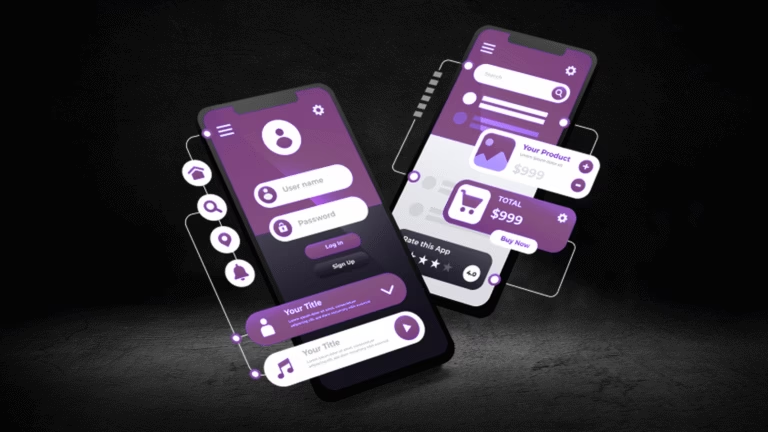Consumer preferences in the jewelry market are influenced by various factors such as regional tastes, social norms, and individual lifestyle choices. For example, while gold jewelry remains the most sought-after, there is a growing inclination towards diamonds, platinum, and silver, especially among younger generations. Additionally, modern consumers are prioritizing unique designs and craftsmanship, indicating a shift from mass-produced items towards more personalized offerings. As trends evolve, incorporating new styles, such as minimalistic as well as vintage themes, is essential for jewelry businesses in India.
With an increasing number of consumers turning to online platforms for their shopping needs, the importance of a well-designed website has never been more critical. A user-friendly website that showcases the intricacies of jewelry pieces can create a deeper connection with potential buyers. An engaging online presence not only provides convenience but also builds trust and credibility among consumers searching for genuine jewelry products. Moreover, by leveraging data analytics, jewelry businesses can gain insights into consumer behavior, which in turn can inform their website design, ensuring that it meets the needs and preferences of their target audience effectively.
As India continues to embrace digital solutions, the jewelry market’s future hinges on businesses that are keen to adapt and innovate. A comprehensive understanding of local tastes, combined with a strong online presence, is vital for standing out in this dynamic market.
Identifying Your Target Audience
Understanding the target audience is a crucial aspect of effective website design, particularly for jewelry businesses in India. By identifying and segmenting your audience, you can create a tailored online experience that resonates with potential customers. The process begins with demographic analysis, which includes factors such as age, gender, income level, and geographic location. For instance, high-end jewelry tends to attract an affluent clientele, while youthful designs may appeal to a younger demographic interested in budget-friendly options. Understanding these demographics allows for a strategic approach to website design and content creation.
However, demographics alone do not provide a comprehensive view of your potential customers. Psychographics, which delve into lifestyle, values, and interests, also play a vital role in identifying target segments. For example, a jewelry business may want to consider the interests of health-conscious consumers, eco-friendly shoppers, or fashion enthusiasts when designing a website. This level of understanding helps in crafting a brand message that resonates deeply with the audience, ultimately influencing purchasing decisions.
Moreover, recognizing customer pain points and motivations is instrumental in creating an impactful online presence. Potential customers may have specific concerns, such as the authenticity of materials, the intricacy of designs, or the availability of customization options. Addressing these concerns through thoughtful website design elements—such as detailed product descriptions, customer testimonials, or easily navigable spaces—can significantly enhance user experience. In turn, a well-designed website that acknowledges the motivations and pain points of its audience can build trust and encourage conversions in the competitive jewelry market.
Essential Features of a Jewelry Business Website
Creating an effective website design for a jewelry business in India requires a thoughtful approach that incorporates essential features to enhance user experience and drive sales. One of the primary components is an attractive product gallery. High-quality images of jewelry pieces help to captivate potential customers, creating a visual appeal that can encourage purchases. It is beneficial to utilize multiple angles and provide zoom functionality, allowing customers to appreciate the intricate details of each piece.
Equally important is user-friendly navigation, which ensures that visitors can easily browse through various collections without frustration. A streamlined menu and clear categorization of products can significantly improve the shopping experience. Effective filters, such as type, metal, price, and style, allow customers to identify their preferences quickly, making the website more engaging and stimulating higher conversion rates.
Another crucial aspect of a jewelry business website is robust e-commerce capabilities. Integrating a user-friendly shopping cart and a seamless checkout process is essential for enhancing customer satisfaction. This includes displaying product availability, offering multiple payment options, and providing clear information regarding shipping and return policies. Additionally, the website should be mobile responsive, catering to the growing number of users who shop via smartphones and tablets.
Security plays a pivotal role in e-commerce transactions; therefore, incorporating a secure payment system is vital. Using trusted payment gateways and ensuring data protection builds customer trust and confidence in the jewelry business. Coupled with this, high-quality imagery and detailed product descriptions are necessary to engage customers effectively. By providing thorough information about materials, sizes, and care instructions, customers are more likely to make informed decisions, ultimately enhancing their shopping experience.
Choosing the Right Color Scheme and Aesthetics
In the realm of website design for jewelry businesses, selecting a suitable color scheme and aesthetic is a critical component that can significantly impact user experience and brand perception. The colors chosen for a website can evoke emotions and convey a distinct identity that aligns with the brand’s core values and offerings. For jewelry businesses, it is essential to create an inviting and luxurious atmosphere, as the visual appeal plays a vital role in attracting customers.
Popular color choices within the jewelry industry often include gold, silver, deep blues, and rich greens, which symbolize elegance, sophistication, and trustworthiness. These colors not only reflect the materials used in the products but also resonate well with Indian consumers who appreciate tradition and opulence. For instance, a gold-centric palette can give the impression of luxury and exclusivity, ideal for high-end jewelry businesses. Similarly, the use of bold colors can draw attention to specific products, enhancing their perceived value and desirability.
Design trends favoring minimalist aesthetics can also prove beneficial for jewelry websites. A clean and simple layout often allows the products to take center stage, making them more visually appealing without unnecessary distractions. When integrating imagery, it is wise to utilize high-quality photographs that highlight the craftsmanship and detail of the jewelry pieces. Additionally, ensuring consistency in the color scheme across different web pages not only enhances visual coherence but also reinforces brand identity.
Overall, carefully choosing a color scheme and aesthetic tailored to a jewelry business could effectively engage users and foster connections with potential customers. As such, this aspect of website design should not be overlooked, as it lays the groundwork for a compelling online presence that resonates with the target audience.
Creating User-Friendly Navigation
User-friendly navigation is a cornerstone of effective website design, particularly for jewelry businesses. When potential customers visit a jewelry website, they expect to find products effortlessly and are likely to leave if they encounter complications. Intuitive menus play a vital role in enhancing user experience, as they allow visitors to quickly grasp the website’s layout and access desired items with minimal effort.
First and foremost, it is crucial to have a well-organized menu structure. Categorizing products—such as rings, necklaces, earrings, and bracelets—enables users to navigate the website seamlessly. Additionally, providing subcategories, like gold, silver, or diamond jewelry, offers further refinement, catering to individual preferences. This layered approach not only enhances usability but also contributes to smoother browsing, fostering an environment conducive to purchasing.
Another essential element of user-friendly navigation is the incorporation of a robust search functionality. Users should be able to enter keywords or phrases to find specific products quickly. Implementing filters, such as price range, metal type, and design, significantly enhances the shopping experience within the jewelry business. The easier it is for customers to find exactly what they want, the less likely they are to abandon the site out of frustration.
Moreover, ensuring that navigation is consistent across all pages reinforces the website design’s overall cohesiveness. Customers should instinctively know where to find navigation buttons, whether they are on the homepage or deeper within a product category. Additionally, making these buttons visually distinct can help guide users through their shopping journey.
In conclusion, by prioritizing user-friendly navigation within a jewelry website, businesses can create a streamlined shopping experience that reduces bounce rates and encourages conversions. An intuitive menu structure, effective search functionality, and consistent design work together to optimize accessibility for all users.
Optimizing for SEO and Local Search
In the competitive landscape of the jewelry business, the importance of Search Engine Optimization (SEO) cannot be overstated. A well-optimized website design can significantly enhance a jewelry brand’s online visibility, driving organic traffic and attracting potential customers. SEO involves a series of strategies aimed at improving the ranking of a website in search engine results, allowing businesses to reach a broader audience.
For jewelry businesses, optimizing product pages is crucial. This begins with the inclusion of relevant keywords that potential customers might use when searching for specific items. Descriptive titles, high-quality images, and detailed product descriptions play a vital role. Using terms related to jewelry—like “gold bracelets,” “diamond earrings,” or “handcrafted necklaces”—can enhance the chances of appearing in search results. It is also advisable to utilize alt text for images, ensuring that search engines can understand what each image represents, thereby improving searchability.
In addition to product pages, creating valuable blog content is another effective strategy for SEO. By addressing common queries about jewelry care, trends, or styling tips, businesses can establish authority in the niche while naturally integrating relevant keywords. Regular blog updates not only engage users but also signal to search engines that the website is active and relevant. Furthermore, utilizing internal links within the blog to direct readers to product pages or related articles can enhance the user experience and improve site navigation.
Local search optimization is particularly important for jewelry businesses with physical stores. Creating a Google My Business listing, ensuring consistent NAP (Name, Address, Phone Number) information across various directories, and encouraging customer reviews can boost local search visibility. By utilizing local keywords, such as “jewelry stores in Mumbai” or “designer jewelry in Delhi,” jewelry businesses can effectively connect with their target audience within specific geographical areas.
Building Trust with Customers Through Design
In the competitive jewelry business market in India, establishing trust with potential customers is crucial for success. Effective website design plays a significant role in conveying credibility and reliability to consumers who are increasingly cautious about online shopping. A well-designed website functions as a digital storefront, and the first impression can make a meaningful impact on consumer trust.
One key element is the incorporation of customer testimonials. Displaying reviews from satisfied customers prominently on the site not only showcases positive experiences but also reassures potential buyers of the quality and authenticity of your jewelry products. Integrating a dedicated testimonials section or including snippets throughout the website can enhance the perceived credibility of your jewelry business.
Moreover, showcasing certifications and affiliations can further boost consumer confidence. If your jewelry business is associated with reputable organizations or holds industry certifications, these should be proudly displayed on the website. Such endorsements signal to customers that they are engaging with a trustworthy brand. Likewise, maintaining a professional and aesthetically pleasing website design contributes to an overall impression of reliability. Elements such as a clean layout, high-resolution images of products, and consistent branding can reflect the quality of the jewelry being sold.
Additionally, having a clear and comprehensive return policy is essential. A well-organized and accessible returns page can alleviate concerns customers might have when making purchases, especially in a sector like jewelry where personal taste and satisfaction are pivotal. Ensuring that this information is easily found within the website design allows potential buyers to proceed with their purchases with confidence.
In conclusion, the website design of a jewelry business in India should prioritize trust-building elements to create a sense of security and confidence among customers. By incorporating testimonials, certifications, professional aesthetics, and clear policies, businesses can foster a reliable online shopping environment that encourages consumer engagement and loyalty.
Incorporating Social Media and Content Marketing
In today’s digital landscape, integrating social media and content marketing into your website design is vital for enhancing customer engagement in the jewelry business. By leveraging these platforms, jewelry businesses in India can effectively showcase their unique offerings and connect with a wider audience. Social media serves as a powerful tool for creating brand awareness and encouraging interaction with potential customers through visually compelling content.
One effective way to incorporate social media is by displaying social proof on your website. This can be achieved by featuring testimonials, reviews, and ratings from satisfied customers. Integrating user-generated content, such as photos of customers wearing your jewelry, not only enhances credibility but also fosters a sense of community. This level of authenticity can significantly influence purchasing decisions, as prospective buyers are more inclined to trust real experiences over marketing messages.
Additionally, incorporating a blog or video section into your website can dramatically improve content marketing efforts. By sharing informative and engaging articles or videos about jewelry maintenance tips, design trends, or styling advice, businesses can establish themselves as experts in the field. This not only helps in driving organic traffic but also provides value to your audience, thereby promoting customer loyalty. Using storytelling techniques to share the brand’s journey or the craftsmanship behind each piece can create emotional connections with potential buyers.
Moreover, ensuring that your social media channels are linked to your website allows for seamless navigation between platforms. This bridge encourages visitors to follow your social media accounts, increasing overall engagement and helping to build a robust online community. Through thoughtfully integrating social media and content marketing into your website design, jewelry businesses in India can enhance their visibility, build trust, and ultimately drive sales.
Measuring Success and Making Improvements
In the evolving landscape of jewelry business, having a well-structured website design is essential not just for attracting visitors, but also for retaining them. To achieve this, analytics play a crucial role in measuring success and identifying areas of improvement for your jewelry website. By monitoring key performance indicators (KPIs), businesses can further optimize their online presence, ensuring that the website design aligns effectively with user expectations and business goals.
Some key performance indicators to track include the website’s traffic sources, bounce rate, average session duration, and conversion rate. Understanding where your visitors are coming from will help tailor marketing strategies, while bounce rates can indicate how engaging your website design is. A high bounce rate suggests that visitors are not finding what they seek, thus signaling a need for adjustments in design or content. Additionally, monitoring the average session duration will provide insights into how long users are engaging with the site, thereby highlighting areas that might benefit from more compelling visual or textual content.
Utilizing tools such as Google Analytics can significantly assist jewelry businesses in gathering valuable data about web traffic. This platform offers in-depth insights regarding user behavior and traffic patterns, empowering business owners to make informed decisions. By analyzing this data, businesses can identify which pages are performing well and which need refinement, thus optimizing the overall website design to better cater to customers’ preferences.
In conclusion, measuring success through analytics and continuously improving your website based on data-driven insights is vital for ensuring the growth and sustainability of a jewelry business. By maintaining a focus on performance metrics, you can evolve your website design to meet customer needs effectively, driving both engagement and conversions in this competitive market.








